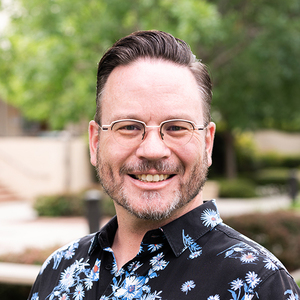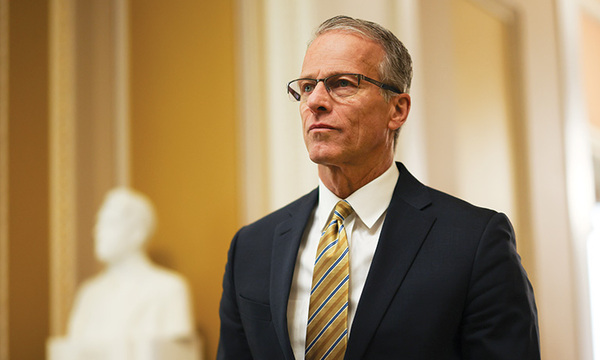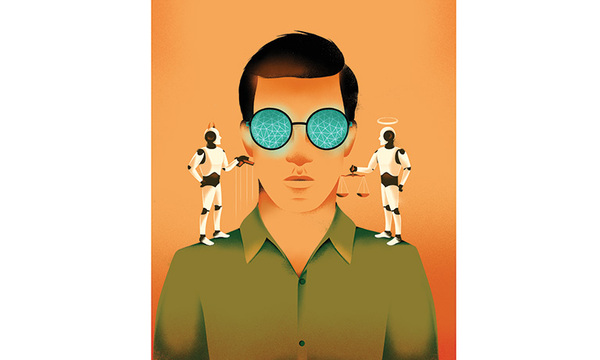
“Take my tired body, my confused mind, and my restless soul into your arms, and give me rest, simple quiet rest.”
These words from Henri Nouwen’s Reaching Out appear at the beginning of my journal from my first visit to the L’Abri Fellowship in rural Hampshire, England — a place I have stayed for two summers in order to seek after rest and sacred space.

To truly experience rest, however, first I had to learn a few things about time. After all, this desire to rest that we often feel in our stress-burdened and anxiety-filled lives comes from a desire to get out of the manic flow of time, to slow down, and to find that much-needed rest. Yet still, that rest often remains elusive, so it might do us some good to first re-examine what we mean when we talk about time. To most contemporary Westerners, this is simple. There is one word for time, and when we say time, we mean something that has to do with our schedules, the hours, the days, the allotted moments to get certain things done. Time is something that we think we can manage, and we get frustrated when we lose it, or more specifically, lose our control over it.
When I was about 8 years old, I read A Wrinkle in Time by Madeleine L’Engle, a book that has forever haunted me. It was the first time that I had a taste of understanding time differently, and later as an adult I came to understand why. As L’Engle writes in Walking on Water, ancient cultures understood time far differently, and probably far better, than we do. The Greeks had two words for time: chronos and kairos, both of which are used in Scripture, and yet sadly many of us have lost the distinction between them.
We all know chronos — it’s the world of the clock, time marching onward as a chronology of linear history. L’Engle explains that kairos, on the other hand, is:
Real time, God’s time. That time which breaks through chronos with a shock of joy, that time we do not recognize while we are experiencing it, but only afterwards, because kairos has nothing to do with chronological time. In kairos, we are completely unselfconscious, and yet paradoxically far more real than we can ever be when we’re constantly checking our watches for chronological time. The saint in contemplation, lost to self in the mind of God is in kairos. The artist at work is in kairos. The child at play, totally thrown outside herself in the game, be it building a sand castle or making a daisy chain, is in kairos. In kairos we become what we are called to be as human beings, co-creators with God, touching on the wonder of creation. This calling should not be limited to artists, or saints, but it is a fearful calling.
The images on these pages are from a body of work that I’m tentatively calling “And there was evening, and there was morning.” They are all images that in one way or another touch upon the sense of kairos, a moment of participation in God’s time, outside of the stress and anxiety of our chronos time.

Of course, one does not have to be in a manor house in rural England to experience rest, or a sense of God’s peace, but often we need these places to be stark contrasts to the life we’ve found ourselves wrapped up into. Here, outside of my normal chronos, I was able to enter into the life of the L’Abri community, a place where each day has a rhythm and a liturgy. There’s a time for everything, whether that be personal study, prayer and reading, or chores like laundry, gardening and food preparation. All meals are shared together as a community, as are multiple tea breaks throughout the day, because, of course, this is England, and the world stops for tea. I think they are on to something with that. In these daily rhythms, the slavery of a schedule falls away to provide a space where everything can potentially be experienced in kairos time, and as I would stop to sip tea with my fellow pilgrims, I began to see that.
Rabbi Abraham Heschel, in his book The Sabbath, reminds us that in the Jewish mindset, the goal of time is “not to have, but to be.” Time, kairos time, is a sacred space. Heschel warns that we can’t solve our problems with time through the conquest of time; we can only solve the problem of time through its sanctification, which he refers to as “building cathedrals within time.” It is time, and the events that occur within time, that God has made holy, not specific spaces, as is the case in other religions. A restful retreat to someplace special is often what we need in our modern lives, but it can also happen wherever you are, right now, because we have a God who has intervened in chronos and occasionally shows us what participation in his time looks like. Have a cup of tea and think about that for a while. Stop doing, and start being; you might just see and experience a little bit of kairos.
Kurt Simonson (’00) is an artist and assistant professor of photography at Biola University. The photographs shown here are from Kurt Simonson’s project “And there was evening, and there was morning,” a series of still life studies done at the English L’Abri between 2007 and 2010. His work has been exhibited throughout the country and internationally. To see more of the work, visit kurtsimonson.com.
 Biola University
Biola University



